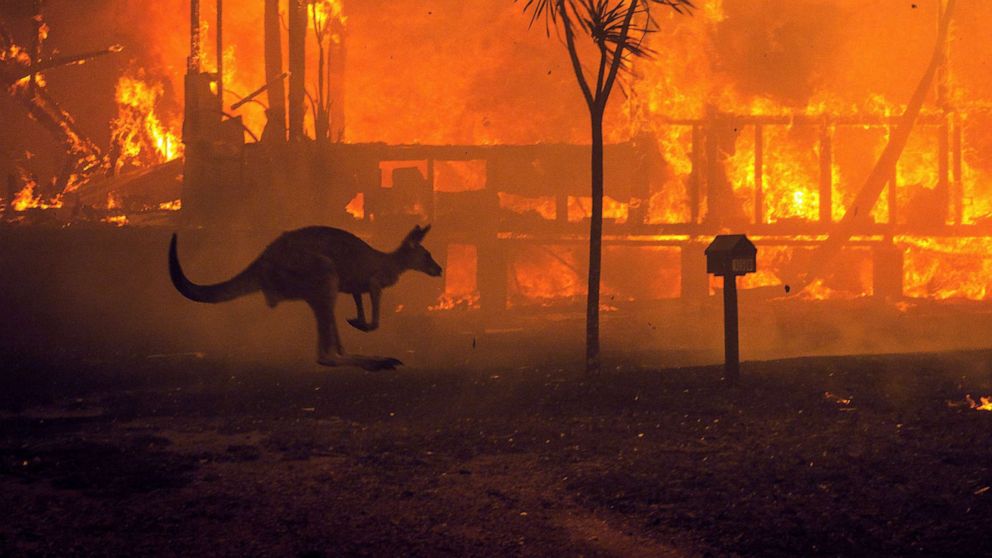
Photograph: Evan Quartermain/Humane Society International 4. Humane Society International’s disaster relief team visit the Kangaroo Island Wildlife Park which is caring for koalas and other stricken wildlife. Ecologists have spoken about how cameras they set up to monitor the species in its habitat melted in the flames. The species is listed as endangered under national environment law and there are fears the fires may have wiped out the animals. Kangaroo Island dunnartĮven before the fires, there were concerns for the future of the Kangaroo Island dunnart, a small marsupial found nowhere else in Australia. Preliminary analysis suggests 50%-60% of their habitat has burned. Two decades of conservation work by the Kangaroo Island community had brought numbers from as low as 150 in the 1990s to as high as 400 before the fires. In particular, there are concerns for the birds’ nesting habitat.

Kangaroo Island is home to a unique sub-species of Glossy black-cockatoo and there are grave fears extensive areas of critical habitat have burned in fires that have devastated two-thirds of the island. Glossy black-cockatoo (Kangaroo Island sub-species) These are some of the species experts hold concerns for: 1. “The number of species and ecosystems that have been severely impacted across their ranges is almost certain to be much higher, especially when factoring in less well-known species of reptiles, amphibians and invertebrates.” "Spontaneous volunteers will sneak into disaster areas to rescue forcibly abandoned pets for the same reasons.“This is just the tip of the iceberg,” James Trezise, a policy analyst at the Australian Conservation Foundation, says. "Pets are an integral part of people's families, and humans will delay or refuse evacuation if they cannot evacuate with their pets or, at the very least, be assured that first responders and emergency management personnel have a well-organized plan for managing those pets that must be left behind," she wrote. Williams said failing to make animal care a bigger part of emergency planning ultimately puts human lives at risk. "People need to know that they're there." "There's a problem with animal licensing," she said. It was hard enough to wrangle all the dogs and cats, but staff were not prepared for all the lizards, birds and snakes that came their way, Williams said.

The research found animal caregivers in Fort McMurray were taken aback by how many exotic animals there were. Williams said she would like to see those records kept in an electronic database. Williams recommends shipping containers be set up filled with non-perishable supplies such as cat litter at various spots in the province so that they could be easily moved where needed.ĭuring the fire, there were also issues with veterinarians being unable to get access to animals' health records. The paper highlights challenges in obtaining and transporting necessary pet-care supplies during the Fort McMurray evacuation. She said people she interviewed emphasized that many animal welfare workers are women and they should feel safe and respected in often male-dominated disaster zones. Williams recommends that an animal welfare expert be included in emergency operations centres during disasters so those concerns aren't overlooked. Williams called the first 72 hours of the evacuation a "communications gong show" as people struggled to find out if their animals were OK and how they could be reunited. A rescue operation began for the critters four days after their humans left, and the first truckload arrived in Edmonton early on May 8. Initially, first responders went from home to home providing food and water to animals, but the evacuation lasted longer than expected. Of the estimated 40,000 pets there at the time, between 1,200 and 1,500 had to be left behind when the whole city was evacuated May 3. Some 88,000 people were forced from their homes as the fire - so fierce and unpredictable it was nicknamed "the Beast" - spread into the northeastern Alberta city.
#MACFORT FIRES ANIMALS HOW TO#
"Although the risk of wildfire is high in and around Fort McMurray, neither the province nor the (Regional Municipality of Wood Buffalo) had a plan for how to manage companion animals during a disaster," said Williams, an associate professor of women's and gender studies.

In a paper released Tuesday, she said a common theme emerged. Kim Williams with Mount Royal University's Centre for Community Disaster Research interviewed 32 evacuees, first responders, veterinarians, volunteers, politicians, policy-makers and animal welfare workers involved in Canada's costliest natural disaster.

CALGARY - A Calgary researcher says the Fort McMurray wildfire in 2016 showed how pets are often overlooked in disaster planning.


 0 kommentar(er)
0 kommentar(er)
